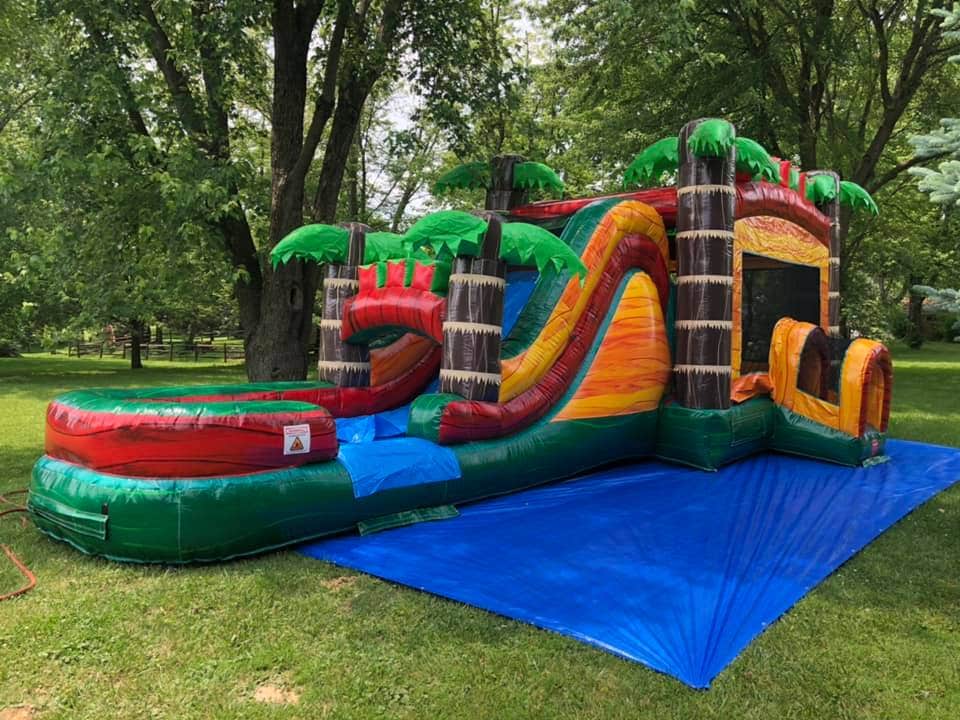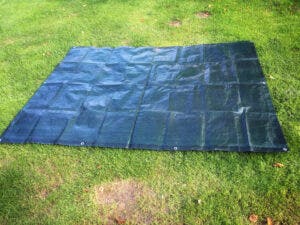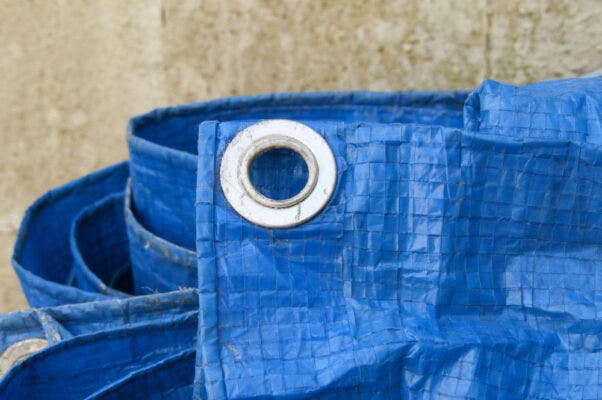Your Big Inflatables Need Tarps, and Here’s Why
Browsing through the products on our website, you’re going to see a whole lot of fun backyard party items. Bounce houses, inflatable water slides, party tents, dunk tanks … it all makes you think of throwing a party, doesn’t it? But then you’ll spot something that makes you scratch your head. Why the heck are we selling … tarps? What is a tarp category—a whole category!—doing on this otherwise fun website?
This isn’t some strange gag where only we know the punchline. Tarps play an integral role in the safe operation of your bounce house, whether it’s a big commercial inflatable or one of our exclusive consumer grade vinyl crossover inflatables. And choosing the right tarp for your inflatables is a simple but incredibly important step.
Let’s take a few moments to discuss tarps and answer a few important questions. What is a tarp? Why do you need one for your bounce house? How do you choose the right tarp(s) for your inflatables? And while we’re on the subject, what other uses can you get out of this tarp around the house?
What is a Tarp?
It’s probably safe to assume that most of you reading this already know what a tarp is, or at least have a vague idea. But let’s very briefly recap, shall we?
A tarp is a large sheet of material designed to protect something from damage or the elements. It’s sort of like a huge blanket you can use to cover something with to help keep it safe. Or, to cover the ground and protect something you’re setting up on top of it.

The list of uses for tarps would take longer to rattle off than a round trip visit to Mars. They’re used to cover cargo on 18-wheelers and trains. Roofers use them to protect the inside of your home from the elements while they’re working. Farmers use them to cover hay. Some people even use them to build makeshift shelters, propping them up in some way to make tents.
Of course, most of you reading this aren’t roofing, or filming one of those harrowing disaster survival reality shows on TV. So how is a tarp useful around the home for someone who doesn’t need one professionally?
Well, let’s irritate our moms a little here and answer a question with another question. Do you own things you’d like to keep outdoors, but that you also want to protect from rain, sun fading, or mild debris on windy days?
Tarps can be used to cover patio furniture, or a riding lawn mower, or a wood pile for your fireplace. You can tie one up as a temporary sun shade while gardening, or lay it out on the floor while carving pumpkins. Some rather intrepid pickup truck owners have even lined their truck beds with them to create what could be generously described as a makeshift mobile swimming pool.
What Does a Tarp Do to Protect a Bounce House?
So what is a tarp’s role in safely operating a bounce house? I mean, you’ve seen bounce houses set up before, but you never saw the tarp, right? Well, that’s because the tarp was underneath it!

Before you roll out your bounce house, you should lay out a tarp on the ground that’s large enough to completely separate the bounce house from the grass. In other words, if the footprint of your bounce house is around 14’ x 14’, you’ll want a tarp that’s at least 14’ x 14’, or even 15’ x 15’.
The reasons you need to use tarps with bounce houses and other inflatables are plentiful. Here are a few of the big ones:
- Your tarp keeps the underside of your bounce house clean and dry during operation
- It protects the bounce house from any debris (rocks, twigs, etc.) on the ground you may have missed before setting up
- The tarp prevents scuffing damage from the bounce house slightly moving around while in use. And also ...
- On hard surfaces (say, in a school gymnasium), the tarp prevents the bounce house from moving too erratically and helps keep it anchored
- For inflatable water slides and slip and slides, a tarp can help protect the ground from turning into a muddy, soggy mess
Okay … But Do I Really Need a Tarp?
Tarps are incredibly beneficial, but do you absolutely, positively need to use one? Not necessarily. While we very strongly recommend using tarps with your bounce house, you can technically set up without one.
If you opt to not use a tarp, you’ll need to put extra care into ensuring the area where you’re setting up is completely free of debris that might cause damage and leave you patching the bounce house later. You’ll also need to spend more time cleaning your bounce house after the party is over, as they can get quite filthy without the protection of a high quality tarp.
Tarps may seem expensive, but they help ensure your bounce house lasts longer. And you’ll manage to find a lot of uses for your tarp when the bounce house is packed away in storage, too. Just make sure the tarp you’re buying is big enough that the entire bounce house fits on top of it. You may want to go a foot or two bigger even, just to be safe.
If you need any help choosing the best tarp for the job, please don’t hesitate to give us a call today at 716-566-5806. Pogo’s team of backyard fun experts is standing by to point you in the right direction. Which, given that we’re discussing bounce houses, is skyward!


